By George Sibley
I should probably be trying to write something wonky about American politics, but instead I’m writing this article from the near-wilds on the sunny side of Grand Mesa, at a rendezvous of an organization formerly known as the Crested Butte Hotshots.
The Hotshots were a forest-fire crew based in Crested Butte who fought dozens of fires all over the West from 1971 to 1978. Like most fire crews, the Crested Butte Hotshots organized locally, with some Forest Service training on building firelines and other techniques for trying to control and contain big fires with little or no water. A functional hotshot crew required a cadre of couple dozen people able to drop everything (like jobs) to show up on fire call, willing to work hard for twelve-hour shifts in treacherous terrain under terrible conditions, with good stamina, a fair level of internal organization and the capacity for handling dangerous situations intelligently. Word gets around the land-management agencies about a crew that meets such standards locally, and the crew gets invitations to regional “project fires,” where hundreds of firefighters are assembled to fight huge fires raging over many thousands of acres. When a crew hits that “big show,” it almost becomes a dependable seasonal job.
It was easy to muster a crew like that in Crested Butte in the ’70s because there wasn’t much steady summer work in the Upper Gunnison valley in those days, but there were growing numbers of young fit people there for the scenery and general absence of civilization’s discontents and pressures. They still needed grocery, rent and bar money, however; so they all needed at least spurts of employment to cover the costs of living, and fire crew work fit into that way of life very well. It entailed, for example, a week or two of hard work outdoors, twelve-hour days, adrenalizing circumstances culminating in a big bar evening on returning to town, then a week or two to loaf until the next fire call. It amounted to economic development in Crested Butte at that time: 25 young men – and eventually young women too – bringing home $500-1,000 paychecks, all of which circulated through the local economy via landlords, Stefanic’s Grocery, and the bars at least once before disappearing back into the maw of the national economy.
As a newspaper editor in the late ’60s and early ’70s, I had a modest hand in early efforts to organize and train a fire crew – but as the only newspaper employee, I was also unable to just drop everything and go out on fires, even though it stirred my own sense of adventure.
The Crested Butte Hotshots, meanwhile, achieved a good reputation as a hard-working crew, and started getting called for more fires, farther from home. And when the whole Northwest dried up and began to burn in 1973, it coincided with my decision to sell the newspaper due to insufficient business skills, and I sought a slot with the Hotshots. My timing was right; with one crew already in Montana, the Boise fire bosses asked if there was another crew available to go to Idaho, and Ron Baar, a super skier, sometime construction contractor and Hotshot crew chief, who had been finishing up a job when the first crew went out, pulled together the requisite number and included me, despite a lack of training.
It doesn’t seem right to say it was one of the great weeks of my young life – thousands of trees were dying violently all around us. But it was that. We had some bad moments on that Idaho fire – steep and unfamiliar terrain, fire seemingly everywhere and often viciously so. One afternoon we literally had to run for our lives while getting soaked by an aerial bombardment of pink slurry.
The fire camp was in an abandoned homestead orchard that was surrounded by burning hills. By the end of the second day, the orchard had been turned into a small city with hundreds of firefighters, supported by a National Guard company, great tables of food, tents for sleeping, a shower tent, dozens of porta-potties, a machine shop for sharpening everything. In other words, a massive operation and our tax dollars at work.
But despite the smoke, the occasional terror, the devastation of the forest (by the fight as well as the fire), it was a wonderful experience. Full of wonder, for sure – seeing great volumes of fire leaping up a mountainside in a matter of minutes, fed as much by sap-vapor cooked out of the overheated trees as by the trees themselves; or watching a sudden wind blow burning cones and twigs across our fireline; or waking in the night to see the night-quieted fire winking and flaring all around us – just wait till tomorrow. Yes, full of wonder.
But mostly it was wonderful to just be out there with a band of brothers – which is what we became that week. Guys I barely knew in town, some of them newcomers – there’s nothing like encouraging each other through a brush with death to get to know, at the very least, something important about a stranger. It tapped into some very old human roots, to be out there with this truly dirty, stinking bunch of hippies, dropouts, drying-out drinkers and druggies (the Forest Service was too smart to pull a TSA-type pack-and-pocket search on a hard-working crew).
Over the next two years, I went on maybe half a dozen fires with the Hotshots, but then had to drop out in 1976 when I got involved, first in one of my inconclusive forays into graduate work, and then in a book project. The Hotshots continued to get invited to big fires outside the local area because they worked hard – but they also began to rack up a reputation for playing hard both during and after fires. After a brawl in an Eagle bar worthy of a John Wayne movie (“We didn’t start it!” became a Hotshot mantra), they were blackballed from regional activity. According to some of the Hotshot “elders,” a subsequent food fight in a KFC in Grand Junction marked the end of their relationship with the Forest Service even for local fires.
Several Hotshots – Baar, Tim Reed, Hugh Carson – went on to individual careers fighting fires. But the local economy, especially in the summer, was also improving to the extent that it was growing harder to round up enough trained “regulars” able to drop everything to go on a fire call.
The mountain town phenomenon of people moving on also took its toll; the Crested Butte Hotshot rendezvous this past weekend was held over on high slopes a valley removed from Crested Butte because so many of the Hotshots had moved there, finding Crested Butte getting a little too civilized. I confess to having been a little ambiguous about going to this rendezvous – did I really have sufficient Hotshot cred to be there? And was it going to just be a weekend of “wild things” bragging about tripping out while chinking fireline? I write, but I’m no Hunter Thompson, and don’t care to be. I should have known better – known the brothers and sisters better. (Yes – in the late ’70s the Crested Butte Hotshots became the first crew in Colorado to accept women who passed the tests for Forest Service “red cards.”)
Around 35 former Hotshots showed up at crew leader John Benjamin’s “Raindance” compound, many with wives or partners, and from all over the continental U.S. Some of them wore the past four decades really well; others were somewhat heftier; some were skinnier (not all healthily so). Conversations ranged from Hotshot reminiscences about hijinks and horrors and stupidities, to 40 years of failed and successful ventures (some involving marijuana adventures before Colorado had the good sense to legalize it), to current personal health issues. No one has survived intact (obviously); stories were told of half a dozen who didn’t survive at all; and intimations of mortality permeated the event like the smell of smoke from the perpetual bonfire. (“There goes my winter wood,” Benjamin grumbled, a Benjamin grin on his face.)
At the Saturday night banquet, tales were told, some of them twice-told because of what the first teller had gotten wrong, and other corrections were shouted from the floor. Baar excused any inaccuracies: “After 45 years, we can make this crew whatever we want.” Never let mere history get in the way of a good legend.
But some of the Hotshots spoke more seriously. “We were good,” said Jim Cazer, “and we were lucky” – noting that we had never had a single serious injury on a fire, let alone one of those mass tragedies that have happened to other good hotshot crews. Others gave credit for this to squad leaders who got in the faces of “overhead” bosses who wanted to send their squads into places they felt were too dangerous, based on experience – refusals that usually proved prescient as they watched fires rage over where they might have been.
Jim Wallace, another crew leader, a blacksmith, and Crested Butte’s second hippie town councilor, reflected on the Hotshots as an intensified exemplar of what he thought of as the spirit of Crested Butte, which involved taking care of one another and the place where you are.
Myself – it makes me think that a lot of the heart and soul that carried the species through the million years or so of wandering the steppes in the shadow of the Big Ice is still there under the delusions of free markets and individualism, a tappable resource in hard times, but only under the right circumstances, which always involve a band of brothers and sisters.
George Sibley writes from and of the Gunnison River branch of Central Colorado, and enjoys hearing from readers at george@gard-sibley.org.

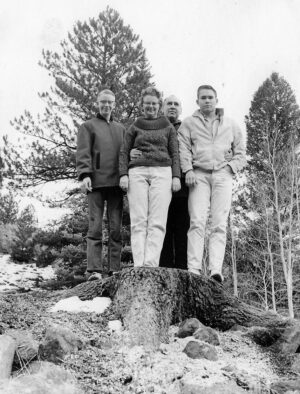
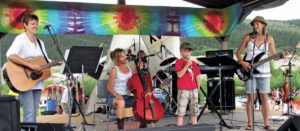
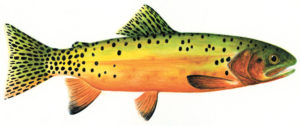
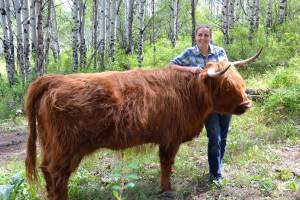
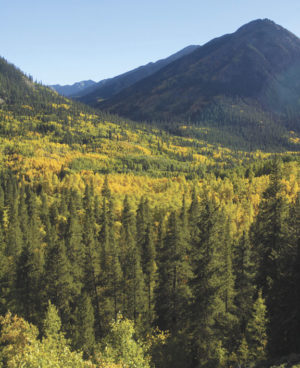
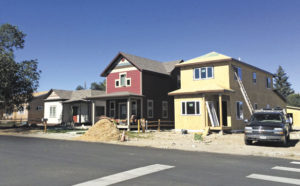
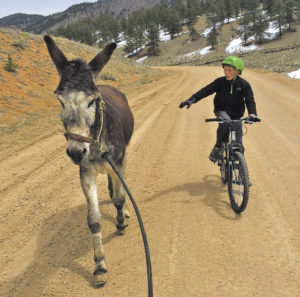
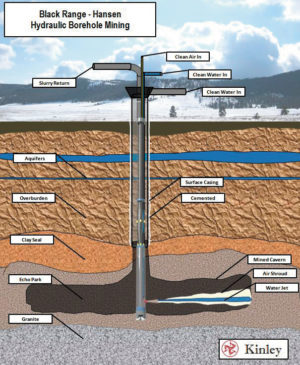
George, thanks for the roundup with words. It brings together a good bunch of people during a good time of our lives dare I say. Thanks to all for the good times and Memories. Dispute it all we were all one.
I’ll second that.